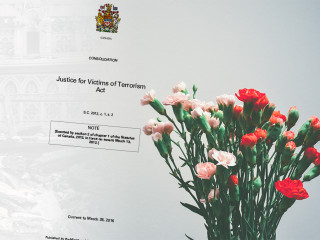Where trial counsel employs inflammatory and inappropriate language in their closing, a clear and strong jury charge may obviate the need for a mistrial. Further, where a party fails to provide a Rule 53 report in adherence with the Rules, that expert’s evidence will be limited in scope.
Date Heard: March 15, 2018 | Full Decision [PDF]
This was an appeal from the judgment of Justice Healey of the Superior Court of Justice.
This was a personal injury action in which the defendants admitted liability. The sole issue for the jury was damages. The jury awarded the plaintiff $975,060.00 comprising general damages of $225,000.00, future loss of income of $601,804.00, future healthcare expenses of $41,494.00, and housekeeping of $106,762.00. The plaintiff was also awarded a further $387,343.00 for costs plus pre-judgment interest of $64,541.00.
The Appellants raised three grounds of appeal, arguing the trial judge erred in:
- restricting the scope of testimony of the appellants’ expert;
- failing to declare a mistrial as a consequence of inappropriate closing submissions by the respondent’s trial counsel; and
- failing to provide sufficient guidance to the jury on the appropriate range for non-pecuniary damages.
The Appellants had retained an orthopedic expert but failed to provide a signed Rule 53 report until part way through the trial. The Appellants initially indicated they would not be calling their expert. However, after the Respondent’s orthopedic expert testified, the Appellants sought an order permitting them to call their own orthopedic expert. Justice Healey allowed the expert to testify despite the non-compliance with Rule 53. However, she held that the expert would be restricted to the four corners of his report and could not comment on developments arising after the report was prepared. This included subsequent reports authored by the Respondents’ orthopedic expert as well as the evidence given by the Respondents’ expert at trial.
On appeal, the Appellants argued that Justice Healey had unfairly limited the scope of their orthopedic expert’s evidence. The Court of Appeal disagreed, holding that the situation was largely the creation of the Appellants. The Appellants were slow to deliver the Rule 53 report or indicate that the orthopedic expert would be called. They were provided with the Respondents’ expert reports well in advance of the trial and failed to have their own expert respond. Justice Healey held, and the Court of Appeal agreed, that if the Appellants’ expert had been allowed to give evidence beyond his report, it might have required the Respondents to recall their own expert, causing additional expense and delay.
With respect to the closing address of the Respondents’ counsel at trial, the Appellants argued that the inflammatory and inappropriate content should have resulted in a mistrial. Specifically, the Appellants took issue with the manner in which trial counsel for the Respondents discussed the evidence of the Appellants’ orthopedic expert. The Appellants argued that as Justice Healey had already limited the scope of the expert’s evidence, the subsequent comments about the limitations of said evidence were unwarranted and unfair.
The motion for a mistrial was argued over the course of a day and Justice Healey determined that the issue with the closing could be dealt with via a correcting instruction. While the Court of Appeal emphasized its disapproval of the closing, it held that the trial judge was in the best position to deal with the matter. Given the clear and strong instruction to the jury, including an itemized list of the objectionable aspects of the closing, the Court of Appeal held that there was no miscarriage of justice requiring a new trial.
Finally, the Appellants submitted that the trial judge erred in failing to tell the jury that the range for general damages suggested by the Respondents ($175,000.00 – $225,000.00) was too high. The Appellants pointed out that the trial judge herself had acknowledged that there was no case on all fours that supported a damages award in this range.
Again, the Court of Appeal disagreed, holding that Justice Healey had modified her charge with regard to the general damages award to include language suggested by counsel for the Appellants. The Court of Appeal went on to hold that given the age of the injured Respondent at the time of the accident (18) and the serious long-term pain and impairment she was facing, an award of $225,000.00 was not so inordinately high as to call for appellate intervention.
The appeal was dismissed.
Read the full decision [PDF]














